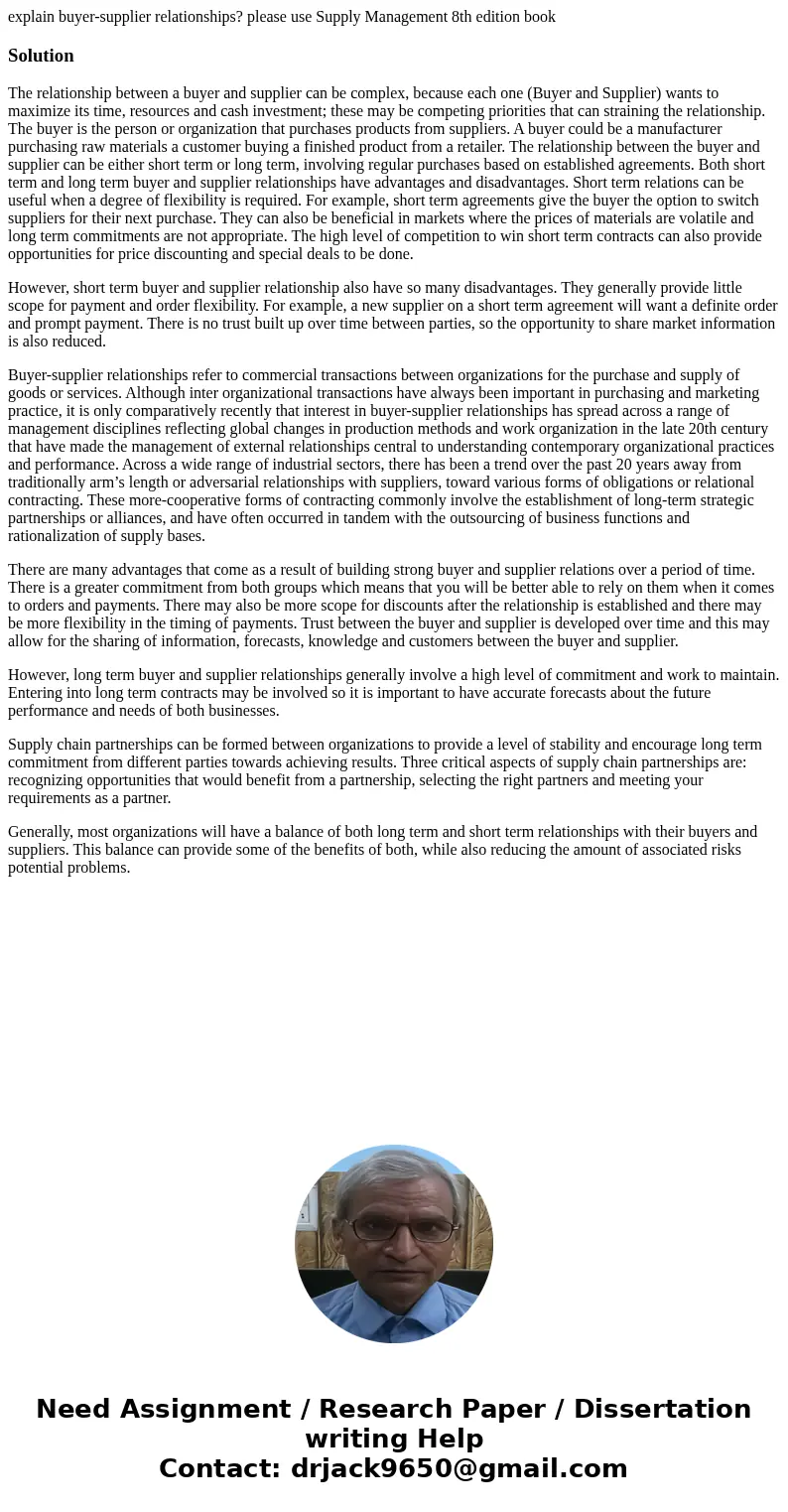explain buyersupplier relationships please use Supply Manage
explain buyer-supplier relationships? please use Supply Management 8th edition book
Solution
The relationship between a buyer and supplier can be complex, because each one (Buyer and Supplier) wants to maximize its time, resources and cash investment; these may be competing priorities that can straining the relationship. The buyer is the person or organization that purchases products from suppliers. A buyer could be a manufacturer purchasing raw materials a customer buying a finished product from a retailer. The relationship between the buyer and supplier can be either short term or long term, involving regular purchases based on established agreements. Both short term and long term buyer and supplier relationships have advantages and disadvantages. Short term relations can be useful when a degree of flexibility is required. For example, short term agreements give the buyer the option to switch suppliers for their next purchase. They can also be beneficial in markets where the prices of materials are volatile and long term commitments are not appropriate. The high level of competition to win short term contracts can also provide opportunities for price discounting and special deals to be done.
However, short term buyer and supplier relationship also have so many disadvantages. They generally provide little scope for payment and order flexibility. For example, a new supplier on a short term agreement will want a definite order and prompt payment. There is no trust built up over time between parties, so the opportunity to share market information is also reduced.
Buyer-supplier relationships refer to commercial transactions between organizations for the purchase and supply of goods or services. Although inter organizational transactions have always been important in purchasing and marketing practice, it is only comparatively recently that interest in buyer-supplier relationships has spread across a range of management disciplines reflecting global changes in production methods and work organization in the late 20th century that have made the management of external relationships central to understanding contemporary organizational practices and performance. Across a wide range of industrial sectors, there has been a trend over the past 20 years away from traditionally arm’s length or adversarial relationships with suppliers, toward various forms of obligations or relational contracting. These more-cooperative forms of contracting commonly involve the establishment of long-term strategic partnerships or alliances, and have often occurred in tandem with the outsourcing of business functions and rationalization of supply bases.
There are many advantages that come as a result of building strong buyer and supplier relations over a period of time. There is a greater commitment from both groups which means that you will be better able to rely on them when it comes to orders and payments. There may also be more scope for discounts after the relationship is established and there may be more flexibility in the timing of payments. Trust between the buyer and supplier is developed over time and this may allow for the sharing of information, forecasts, knowledge and customers between the buyer and supplier.
However, long term buyer and supplier relationships generally involve a high level of commitment and work to maintain. Entering into long term contracts may be involved so it is important to have accurate forecasts about the future performance and needs of both businesses.
Supply chain partnerships can be formed between organizations to provide a level of stability and encourage long term commitment from different parties towards achieving results. Three critical aspects of supply chain partnerships are: recognizing opportunities that would benefit from a partnership, selecting the right partners and meeting your requirements as a partner.
Generally, most organizations will have a balance of both long term and short term relationships with their buyers and suppliers. This balance can provide some of the benefits of both, while also reducing the amount of associated risks potential problems.

 Homework Sourse
Homework Sourse